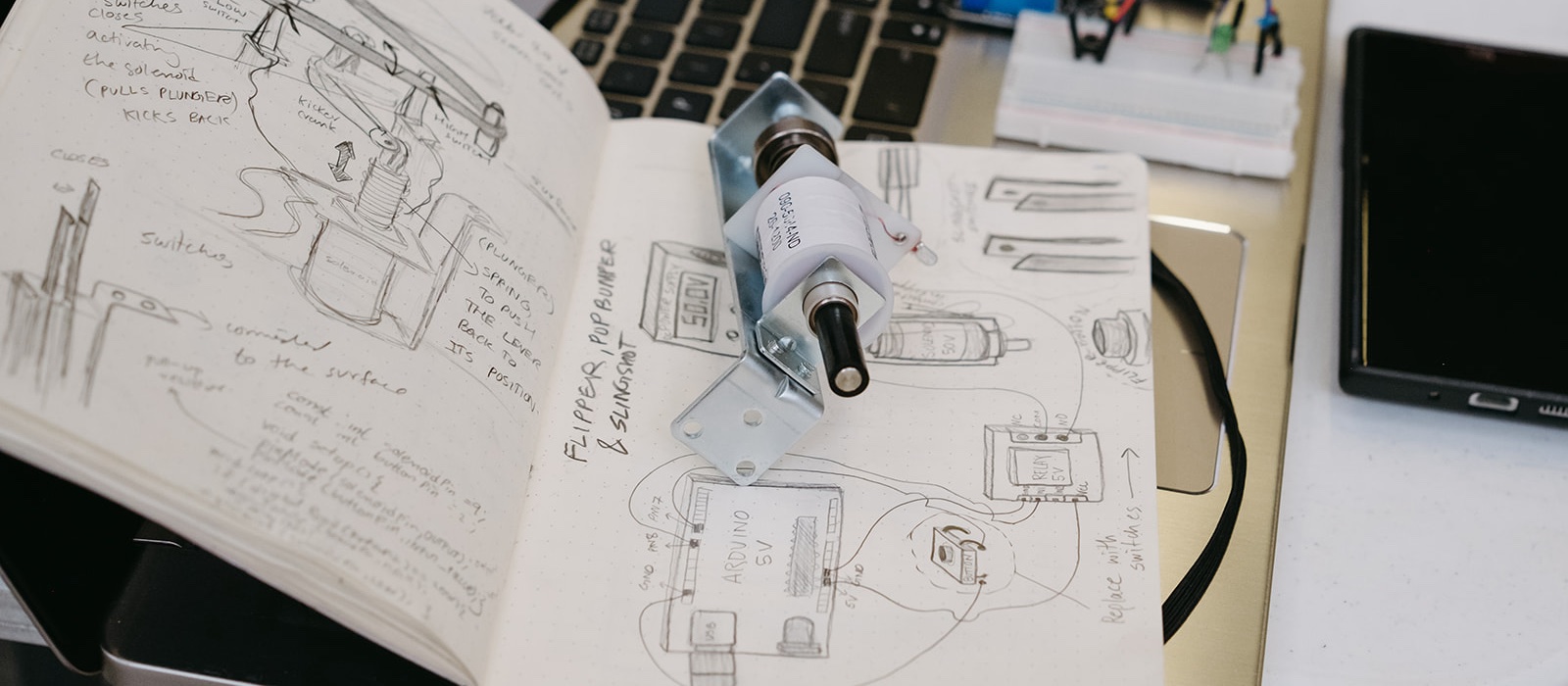There are two kind of projects offered in 2024-2025 academic year. The first type is based on supervision by any given individual faculty member, and the second is a larger group project offered by one or more faculty members. In the case of larger, projects, students are still assigned a specific faculty member, but the project runs within a larger group of students (typical 8-15, for instance). Students interested in the group projects should still indicate their preferred supervisors when completing their project applications.
Standard Projects
Group Projects
| Solar Power Wireless Charging Station for Electric Scooter | |
| Introduction: Electric vehicles (EV) are becoming more efficient and cost competitive given the desire to push away from petrol- and diesel-powered vehicles to help provide cleaner environment. Wireless charging technology could make EVs even more reliable on a day-to-day basis, especially for those who see cables and connectors that need to be replaced every few years as a hassle. Wireless inductive charging uses the principle of electromagnetic induction to transmit electrical power through the air as a magnetic field.
Objectives: is to develop an electric vehicle charging system that utilizes solar panel, battery, AC/DC converters, regulator circuitry, copper coils, and controller. The solar panel will be used to power the battery through a controller. The core idea of this project is to harness solar energy using high-efficiency solar panels, store the captured energy in a battery storage system, and utilize this stored energy to wirelessly charge electric scooters. The system is designed to be autonomous, sustainable, and user-friendly, addressing the need for eco-friendly and efficient charging solutions in urban environments. Technical Requirements:
Functional Requirements:
Knowledge of electromagnetic theory is a must , understanding of AVR programming, converters, solar panels, battery management systems and motor controls is required |
|
| Hima Dhulipati
|
Wireless Inductive Charging System Design for Electric Scooter
|
| Shichao Liu
|
Solar Power System Design for Electrical Scooter |
| Memristor-Based Neuromorphic AI Learning System | |
| Arash Ahmadi
|
Simulation and implementation of bio-inspired neural networks
Background: During the last decades, researchers have been trying to study and replicate biological neural systems to understand natural intelligence. Apart from its medical/biological applications, from an information processing viewpoint, it can eventually lead to a new generation of computational devices. Resembling to biological central nervous system, such computational devices open new horizons intelligent, low power, fast and tolerant to both hardware and data failures. Brief description: Building a platform for artificial creatures using a Game Engine (GE). This platform will be used as an environment to develop, simulate, and study behavior of Spiking Neural Networks (SNN). Platform must be capable of running evolutionary algorithms, i.e. Genetic Algorithm (GA). As a result of simulation, successful creatures (SNN structures) will be selected to be implemented on hardware as a proof of concept. Goals/Tasks:
Requirements:
|
| Leonard MacEachern
|
Analog and Mixed Signal Memristor Crossbar Interface
Analog and mixed-signal circuits for interfacing with a memristor crossbar array in a neuromorphic computing system will be implemented. These circuits are critical as they enable the system to store weights in the memristors and perform readout functions to determine computational results. The team will initially use discrete off-the-shelf components to build these circuits on a printed circuit board (PCB) or breadboard. This approach allows for rapid prototyping and testing of various circuit designs to find the most effective configuration for interfacing with the memristor crossbar array.Once a functional design is validated using discrete components, the team will transition to using Cadence and Synopsys software to design an integrated circuit (IC) version of the interface circuits. While the project timeline does not permit actual fabrication of the IC (unless we can figure out how to use the Department’s in-house fab), the design phase will provide valuable experience in IC design and simulation. By working on both discrete and integrated versions, the team will ensure that the final system is robust and capable of efficient operation within the constraints of the project. The skillset developed in this subproject will be related to analog and mixed-signal circuit design, including simulation and layout of integrated circuits using industry standard tools from Cadence and Synopsys. A more detailed description of the project is available at the external link, or for even more detail contact me directly. Requirements: Interest in circuit design is a must. It would be useful to take ELEC4609 in the Fall term and ELEC4707 in the Winter term. If you have experience with Cadence tools like Virtuoso or Maestro that would be very helpful. |
| Steven McGarry
|
Thin Film Based Memristor/Cellular Automata Elements
This project is aimed at the design and evaluation of thin film elements that will act as “memristors” to be used in arrays to form Cellular Automata or Neural Networks. The devices will be printed onto flexible substrates and designed to be integrated with other printable circuit components. The work will involve a combination of:
The students will be involved in all aspects of the work, as listed above. In particular they will be responsible for designing test structures compatible with the printing/processing equipment available and then printing and testing the optical and electrical characteristics of their designs. In conjunction with the supervisor(s) they will ensure compatibility with other printable components and materials. They will also be responsible for the interfacing of their devices/device arrays to the required control and sensing electronics designed by other students in the group and required for the operation of the overall project. |


















